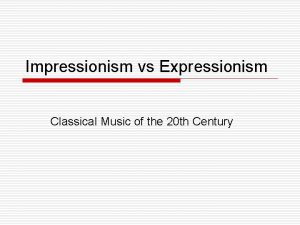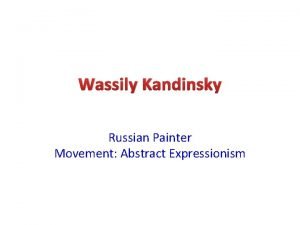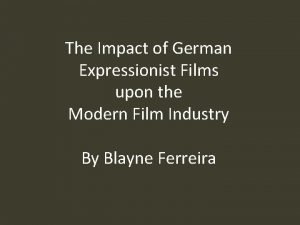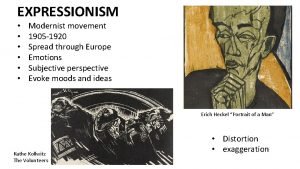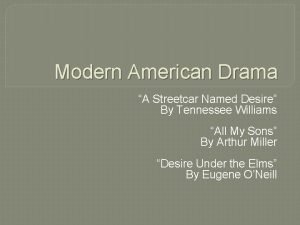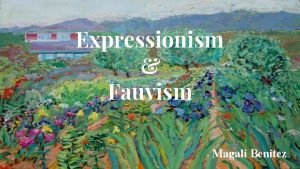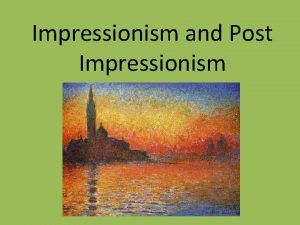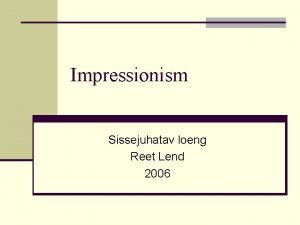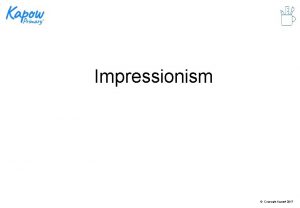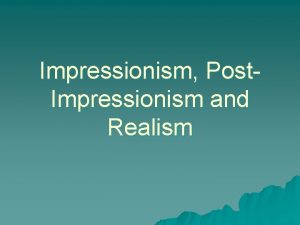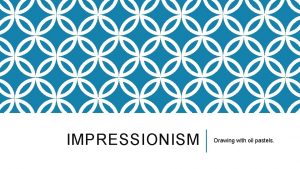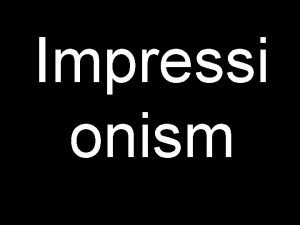CMST 120 Expressionism Impressionism What is Expressionism Expressionism











- Slides: 11

CMST 120 Expressionism & Impressionism

What is Expressionism? �Expressionism is a term used to characterize works of art and literature where the image is distorted for the sake of conveying an inner vision. �The expressionist transforms reality rather than seeking to imitate it. �Most art theorists describe it as a bit opposite of impressionism.

Impressionism Some things that define Impressions: �Dabs of color and letting brush strokes show. �Painting outdoors directly from nature. �The painters saw light and color everywhere, even in the darkest shadows.

Example of Impressionism The image of the apple is: �Made of different color strokes. �The background is green and the apple is red (complementary color).

Example of Impressionism �In this small example we see again how we have dabs of color. �It was an unpolished look at painting.

Example of Impressionism Ballet dancers were a favorite subject of Edgar Degas. Note The light coming in from the windows is a major focus of this work.

Example of Impressionism � Henry Ossawa Tanner was an African American artist who created impressionist paintings. � Note in this painting the Banjo Lesson the use of color and lighting.

Expressionism Some things that define Expressionism: � Exaggerated color and form for the purpose of expressing emotion. � Usually vivid imagery and emotion � Disjointed space and agitated brushstrokes � Often showing a dark side of human nature

Example of Expressionism � The Scream by Edvard Munch (1893) � Used a variety of different mediums to create it. � Contrast of light and agitated emotion.

Expressionism in Caligari Distortion, angularity, emphasis on shapes

Expressionism in Caligari � Rudolf Meinert, the producer of Caligari, reputedly told the artists involved in the project to "Make these sets as eccentrically as you can!” � These odd angles and strange shapes accord to states of anxiety, uncertainty, and terror; they create a hypnotic and nightmarish world;
 What came after post impressionism
What came after post impressionism Expressionism musical example
Expressionism musical example Symbolism vs impressionism
Symbolism vs impressionism 160+140
160+140 Px home
Px home Expressionism in death of a salesman
Expressionism in death of a salesman Russian expressionism
Russian expressionism German expressionist directors
German expressionist directors What started the expressionism movement
What started the expressionism movement Expressionism video
Expressionism video Expressionism in a streetcar named desire
Expressionism in a streetcar named desire Expressionism
Expressionism

